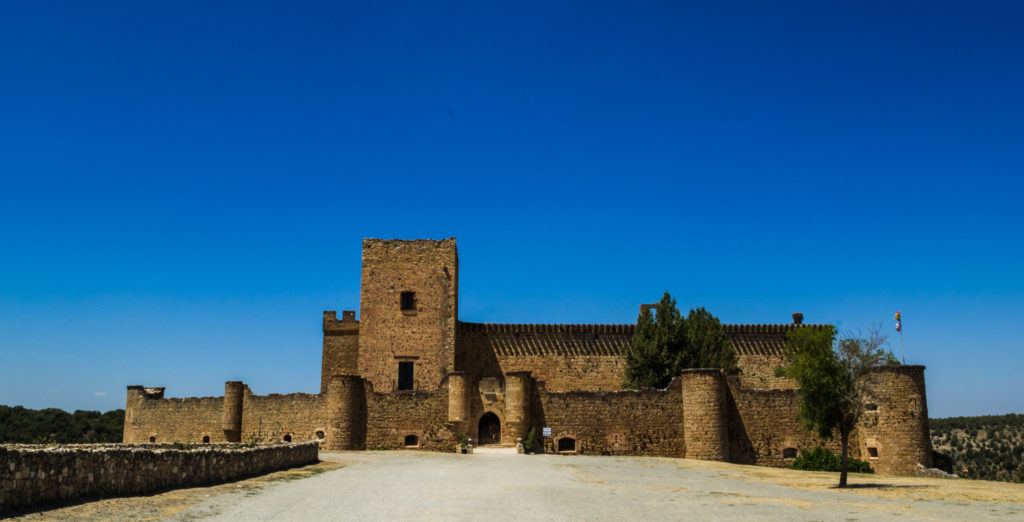The original castle is believed to have been the birthplace of the Roman emperor Trajan, and the prison of two hostages, the sons of the French king Francois I.
Don Sancho, Lord of the castle, went off to fight at the Battle of Navas de Tolosa one fine day in 1212. On his return he noticed that his wife, Elvira, seemed less than delighted to see him. He found out that she had reignited an old flame with her confessor Roberto.
Don Sancho organised a supper where he placed a specially crafted iron crown on Roberto’s head, mortally wounding him. Elvira ran for her dagger and killed herself while her husband wandered off, never to be seen again while the castle burned.
Today it is said that two luminous figures can be seen together on the battlements; probably not Elvira and Sancho.
Every year a festival takes place in and around the castle called ‘La Noche de las Velas’, (the night of the candles) and various Spanish series and films have been made there, such as ‘Isabel’.
In 1926 it was acquired by a Basque artist, and now houses his work as the ‘Museo Ignacio Zuloaga’.
They also do weddings.
Medieval Pedraza has been used for many films, and the unspoilt streets, virtually vehicle-less, are usually tranquil, except for weekends when the tourists arrive.
Most days, if you hang around El Soportal Restaurant on the main square, next to the Town Hall, you can run into Julián Maté, enjoying a post-lunch glass of brandy.
Julián knows a lot about the films made in Pedraza, and has participated in many.
Here, according to him, Mister Arkadin, The Immortal Story, (but not Chimes at Midnight he insists) The Return of the Musketeers, Love, Pain and the Whole Damn Thing, Honeymoon Academy and Bolero were all made.
Julián maintains a couple of collages of photos and cuttings on the walls of El Soportal, detailing the films that have been made in Pedraza.
